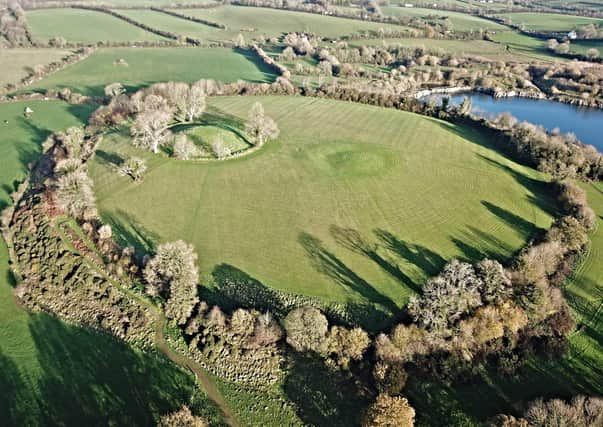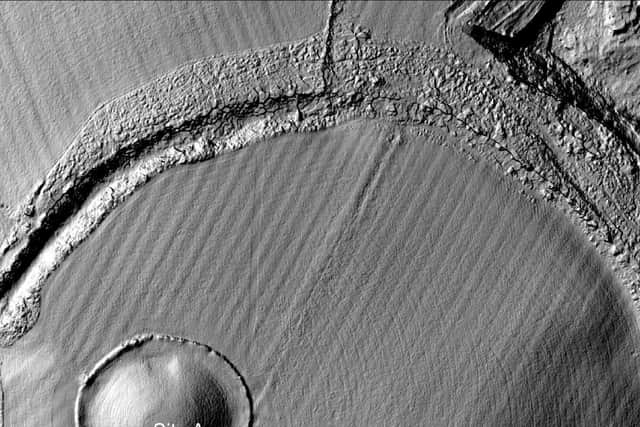Navan Fort survey unearths evidence of Ulster kings’ Iron Age temples


The discovery was made based on research carried out at Navan Fort in Armagh going back to the 1960s.
The survey, which is soon to be published in the Oxford Journey of Archaeology, was led by Dr Patrick Gleeson, senior lecturer in archaeology at Queen’s, and his team of colleagues from the University of Aberdeen and German Archaeological Institute, Frankfurt.
Advertisement
Hide AdAdvertisement
Hide AdDr Gleeson said: “Excavation in the 1960s uncovered one of the most spectacular series of buildings of any region of prehistoric Europe, including a series of figure-of-eight buildings of the Early Iron Age and a 40-metre timber-ringed structure constructed circa 95 BC.


“Upon the latter’s construction, it was immediately filled with stones and burnt to the ground in order to create a massive mound that now dominates the site.
“Our discoveries add significant additional data, hinting that the buildings uncovered in the 1960s were not domestic structures lived in by kings, but a series of massive temples, some of the largest and most complex ritual arena of any region of later prehistoric and pre-Roman northern Europe.”
The results are the initial work of an ongoing programme at Navan Fort.
Advertisement
Hide AdAdvertisement
Hide AdThe sighting evidences a vast temple complex and ceremonial centre of prehistoric Europe, as well as the first evidence of continued medieval activity during the period when Navan Fort was associated with the kingship of Ulster.
It is one of Ireland’s so-called royal sites, a group of five ceremonial centres of prehistoric origin, documented in the medieval period as the capitals of the five fifths that divided Ireland.
The work is part of the Comparative Kingship project, funded by the Leverhulme Trust, and is being supported by Historic Environment Division of the Department of Communities Northern Ireland who own the site as a monument in state care.
Dr John O’Keeffe, principal inspector of historic monuments in the Department for Communities, said: “We were pleased to facilitate the survey work at Navan Fort, which is owned by the Department for Communities and is one of 190 State Care Monuments in NI managed by the Department for Communities.
Advertisement
Hide AdAdvertisement
Hide Ad“The work has shone new light on the monument, and will inform further research as we explore what Navan Fort meant to our forebears and how they used the site, for years to come.
“It provides additional insights that inform visits to this enigmatic monument and landscape today.”